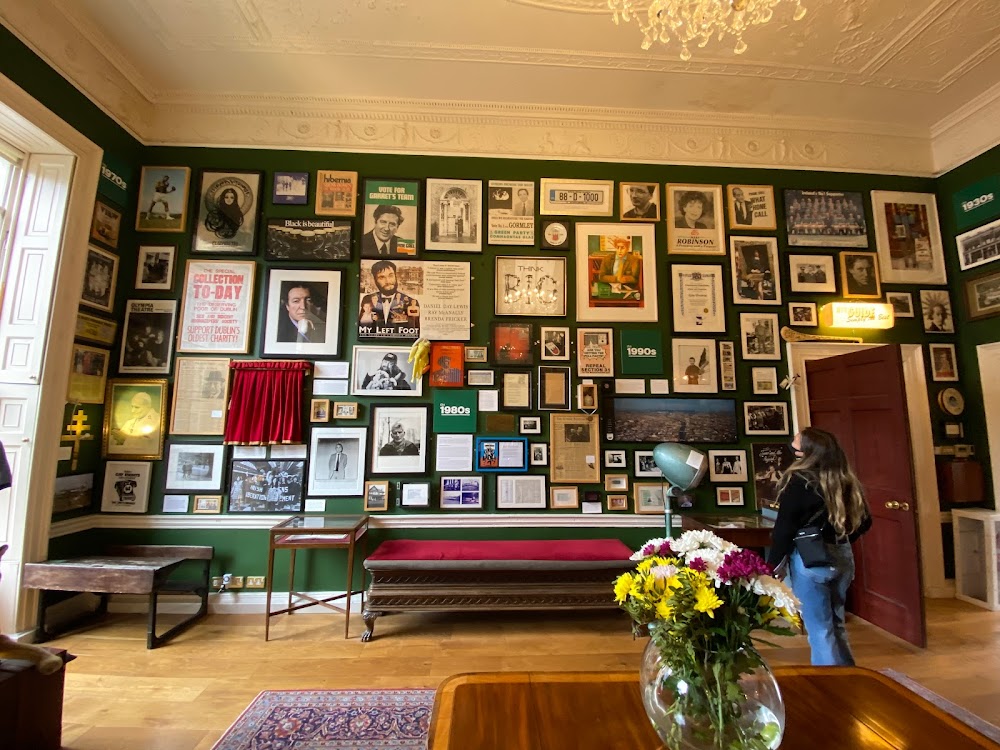National Museum of Ireland - Archaeology (Ard-Mhúsaem na hÉireann - Seandálaíocht)
Overview
The National Museum of Ireland - Archaeology, located in the heart of Dublin, is a captivating destination for anyone intrigued by history and culture. This remarkable institution first opened its doors in 1890, but its journey began several years earlier with discussions aimed at creating a dedicated space to protect and celebrate Ireland's rich archaeological heritage.
The museum's architectural design is a collaboration between the renowned architects Sir Thomas Newenham Deane and his son Thomas Manly Deane. Constructed in the stunning Palladian Revival style, the building was designed to reflect the grandeur of its artifacts while fulfilling the museum's educational mission. The foundation stone was laid in 1885, and after five years of meticulous craftsmanship, the museum welcomed its first visitors.
As you approach the museum, you'll be greeted by its impressive stonework and elegant round-headed windows, which exude a sense of timeless elegance. Step inside to discover a magnificent rotunda entrance hall, inspired by the Pantheon in Rome. Its large, domed ceiling floods the space with natural light, creating a warm and inviting atmosphere for all who enter.
Inside, the museum features seven galleries, each thoughtfully curated to showcase distinct eras and narratives from Ireland's extensive history. One of the most celebrated exhibitions is the collection of Irish antiquities, which includes stunning gold jewelry, intricate metalwork, and stone artifacts dating back thousands of years. Don’t miss the "Treasury" gallery, where masterpieces like the Ardagh Chalice and the Tara Brooch are on display, showcasing the pinnacle of Celtic artistry.
Another highlight is the collection of prehistoric artifacts, featuring tools, pottery, and ceremonial items from Ireland's earliest inhabitants. The "Prehistoric Ireland" gallery offers an immersive experience that transports visitors back in time, highlighting the lives and customs of ancient communities from the Mesolithic, Neolithic, and Bronze Age periods.
The museum also houses a significant array of Viking artifacts, providing insight into the Norse invasions and settlements in Ireland. Unique pieces like swords, axes, and intricate jewelry narrate stories of both warfare and daily life during this fascinating era. Additionally, the collection includes medieval artifacts that illustrate the transition from pagan traditions to Christian influences in Ireland, with manuscripts, reliquaries, and ecclesiastical metalwork emphasizing the rich religious and cultural transformations that shaped society.
In recent years, the museum has embraced modern exhibition techniques and interactive displays designed to engage visitors of all ages. Digital installations and augmented reality experiences offer deeper insights into the stories behind the artifacts, making Ireland’s ancient history accessible and enjoyable for everyone.
The National Museum of Ireland - Archaeology is committed to education and preservation, actively engaging in archaeological research to enhance the understanding of Ireland's past. Collaborating with universities, historical societies, and international institutions, the museum ensures that its collections are not only preserved but continually enriched and studied.
As an educational hub, the museum offers a variety of programs for schools, families, and history enthusiasts. Workshops, guided tours, and lecture series provide valuable opportunities for learning, fostering a deeper appreciation for Ireland’s archaeological heritage.
Maintaining such a diverse collection demands ongoing care and conservation efforts. The museum employs a dedicated team of skilled conservators who work diligently to protect and preserve these artifacts. Utilizing the latest conservation techniques and technologies, they ensure that these treasures remain accessible for future generations to explore and enjoy.
In summary, the National Museum of Ireland - Archaeology is a vital institution that captures the essence of Ireland's rich and varied history. Built by visionary architects and continuously curated by dedicated professionals, it stands as a testament to the island's archaeological and cultural heritage. As a beacon of learning and preservation, it invites all who enter to embark on a journey through time, discovering the stories and artifacts that have shaped Ireland for millennia.








